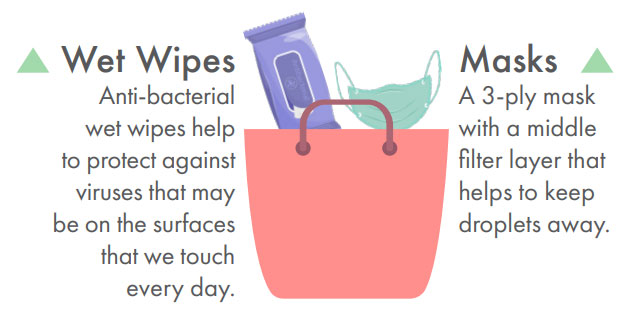30 Sep, 2020
Nonwoven Fibres: A Hopeful or Rough Future?
IMPACT OF COVID-19The COVID-19 pandemic has inevitably had a significant impact on the textile and apparel industry. Orders have been cancelled as retail comes to a near standstill globally, with overall demand and prices falling. In the viscose industry, the operating rate dropped from 75 per cent from the end of 2019 to 60 per cent in June 2020 while prices have fallen by more than 20 per cent in the first six months of this year compared to the same period last year.
Despite these circumstances, Sateri’s non-woven fibre production volume has increased by 30 per cent and sales have been healthy as demand for medical and personal hygiene products such as disinfecting wet wipes have increased during this time.
Wet wipes and masks are additional must-have items in our bags today. Soft and water absorbent nonwoven viscose fibre is a popular choice of raw material for these two items, driving the demand for nonwoven viscose fibre upwards.

Prior to Covid-19, the projected annual growth rate for nonwoven fibres was around 14 per cent, but the pandemic has fuelled greater demand for disinfectant products and antibacterial wipes.
Safety and health advantages have also become major drivers for industrial wipes used in medical and food service businesses during the pandemic. For example, using disposable nonwoven wipes lowers the risk of contamination, as opposed to using reusable laundered textiles. Given this trend, the growth projection for nonwoven fibres is expected to rise, with safety and hygiene being a priority in the foreseeable future.
Sateri has modified two of its current textile fibre production lines in Jiangxi province to produce nonwoven fibres – one is already in operation in mid-June, while the other will be ready later this year.
THE EUROPEAN UNION (EU) SINGLE-USE PLASTICS DIRECTIVE (SUPD)
Both in Asia and globally, increased public awareness and support for environmental protection, higher disposable incomes and product functionality are the three main drivers of demand for plastic-free wipes.
The SUPD is the single most influential regulation that impacts the nonwoven feminine hygiene products and wet wipes across the world. Since its introduction in July 2019, member states are given two years to add the directive into the national law. To help facilitate the process, the directive has called on the European Commission (EC) to prepare corresponding guidelines to clarify its scope and objectives as well as its general terms and definitions, in particular its single-use plastic product definitions.
The initial classification of viscose and lyocell falls under the ‘plastics’ category. As the EU constitutes a major market for the nonwoven industry, the outcome of these classifications will bring about significant repercussions to the nonwoven industry, including Sateri. Sateri along with other nonwoven industry stakeholders have submitted a request regarding this matter, but should the appeal to European Commission fail, there may be market uncertainty and a global shortage of wipes, as prices will be pushed up due to an expected shortage of raw materials.
In reality nevertheless, while plastic-free wipes perform better on softness and water absorbency rate, which are two characteristics that consumers value, consumers can also be price-sensitive, so blended wipes will continue to have a role to play.
